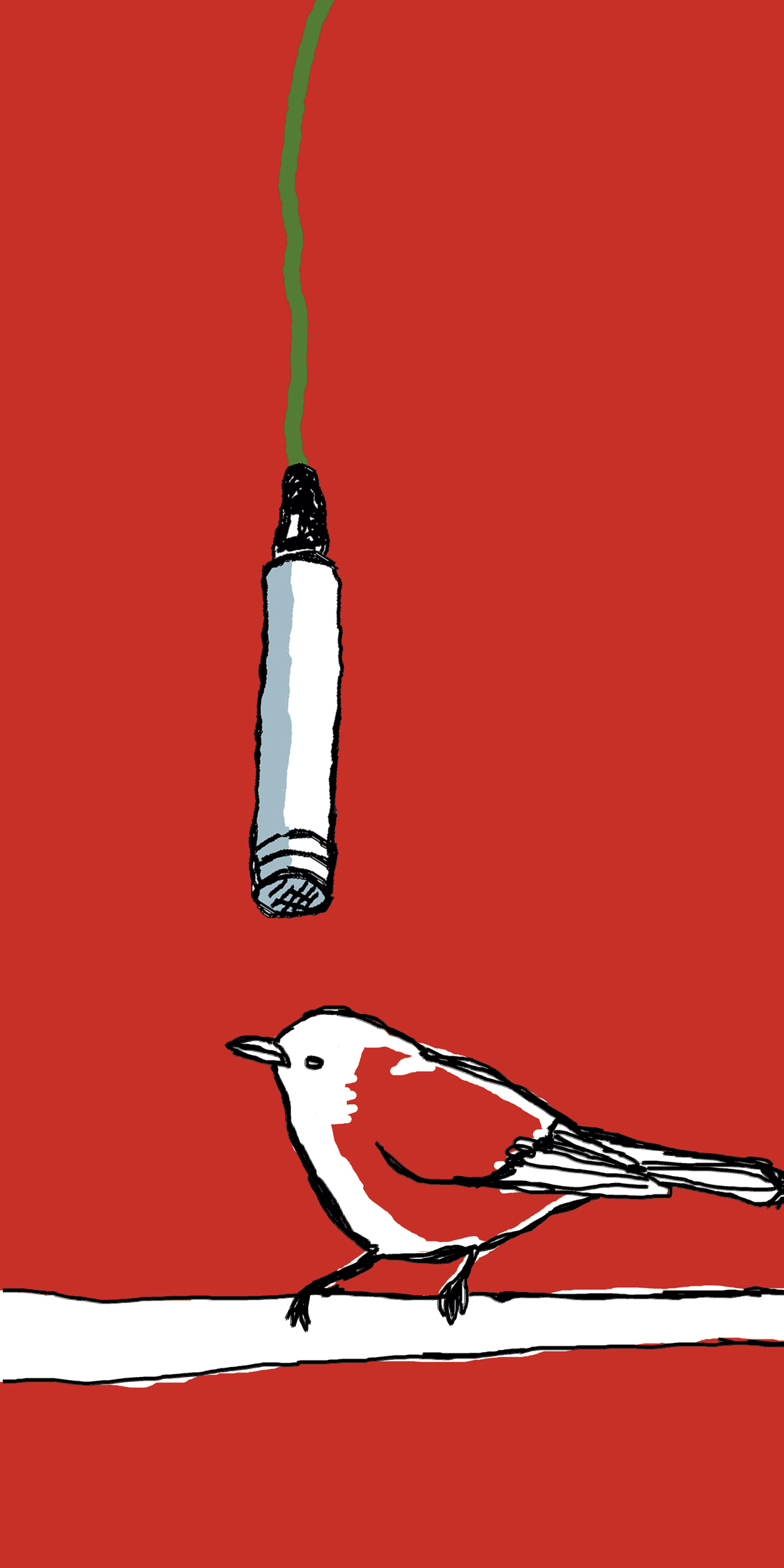When Larry Crane emailed me about reviewing the Groove Tubes VIPRE, I was very excited. I had used this unit when it was first introduced several years ago but never had an ample amount of time to fully evaluate it. This 3RU, single-channel tube preamp is Groove Tubes' intro into the preamp market. It's extremely rugged and well built, with cool retro styling and multiple features. Seemingly going for broke, they incorporated as many features as they could come up with in this unit. The preamp is all tube, Class A, with transformers-classic old-school style. Dual gain controls include a rotary, 5 dB stepped, initial gain knob and a 1 dB stepped attenuator second control; up to 75 dB of gain is available. The usual phantom-power, polarity, and hi- pass switches are augmented by mute and standby switches, as well as a five-position switch to adjust the range of the large VU meter.
The VIPRE of course gets its name from the variable impedance input transformer, not a totally uncommon feature these days, yet not offered on all preamps. The input features four impedance settings, which I tried on different mics. Over a period of months, both Larry and I tried the preamp on many different mics and sources. On ribbon mics, the impedance selection seemed to make the most difference, dialing in slightly brighter tones as I reduced the Ohms. It seems that most early ribbons built in the 40's and 50's like the lower impedance, with the settings appearing to relax the ribbon and providing a smoother response and an extended top end. I used this on a mono piano setup with an RCA BK5 mic. The results were perfect, very well balanced and open, and requiring no EQ. I did take advantage of the built-in high-pass filter. It's very subtle but very useful in terms of cleaning up room bleed or rumble in a live tracking situation. It also sounded amazing for a drum overhead using an old Altec 633 mic, the perfect retro combination, lots of gain and lots of character. The VIPRE also has a "rise time" control, allowing one to set how quickly the tubes react to transient sounds. The manual describes this as a slew-rate control, but it almost sounds more like adjusting the release time on a compressor-the faster release times exhibiting a bigger and more natural tone where the slower, more damped times exhibiting a tighter or more retro sound. Predictably, on sources like guitar, it made no audible difference, yet on snare and tambourine, the slow settings were noticeably less bright with a softer attack. With sources like a lead vocal or acoustic guitar, this was almost like having a subtle compressor in line.
I compared the box to several preamps, including API 312, API 212, Neve 1073, Neve 31105, and the new BLUE Robbie. Compared to the Neve and API, the VIPRE is a slight bit darker, with less edge in the upper mids than an API but more aggressive than the BLUE. It didn't have the fuzzy warmth of the BLUE but did have its own bigness and aggression. It does have the size of the Neve's sound but perhaps not the juicy, compressed tone of a 1073. I did try running the preamp gain hot. There's plenty of gain, 75 dB-great for most old ribbons or condensers recording a classical guitar. My only complaint with the box is that there is no output fader. So if you decide to run the preamp hot to get that Neve-type compression, you will most likely need to put a fader at the input of your console or Pro Tools rig. In actual sessions, I found myself undecided with lead vocals. It doesn't have the air of a Martech MSS-10 or Grace preamp, but it does have a fair amount of midrange presence. It truly depends on the singer and mic combination. At times on female vocals, I did miss the top end, but on male vocals it was extremely bold and complete sounding, making the singer jump out of the track. The VIPRE also has a DI input on the front panel. I compared this with many directs including vintage passive DI boxes, a Demeter Tube DI, the A Designs REDDI, and the BLUE Robbie. While many people loved the warmth and size of the BLUE Robbie and the retro tone of the REDDI, most of the bass players insisted on the VIPRE for their bass. It had a natural tone and a great sense of aggression and transients. This is indeed one of the finest bass directs I've ever heard. [I had the same experience as well. -LC]
The VIPRE is one hefty, solid preamp, with more controls than any single-channel preamp I've ever seen. In my ideal fantasy world, Groove Tubes would make a two-channel version of this box with output faders as well-this would help me adjust to the price tag-but I was fully impressed by the variety of controls and types of sounds this preamp can deliver. It's truly an item for the high-end studio or the project studio that needs one top- end, full and natural-sounding preamp. And if you are a ribbon mic enthusiast, this is a must have. ($2999 MSRP; www.groovetubes.com)




_disp_horizontal_bw.jpg)